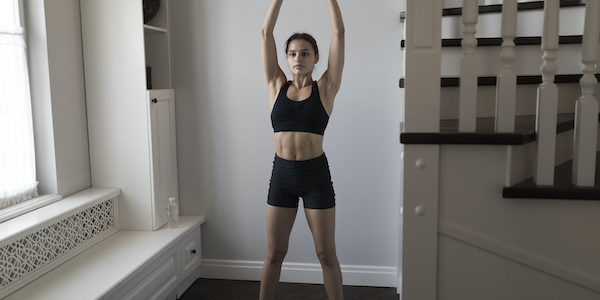
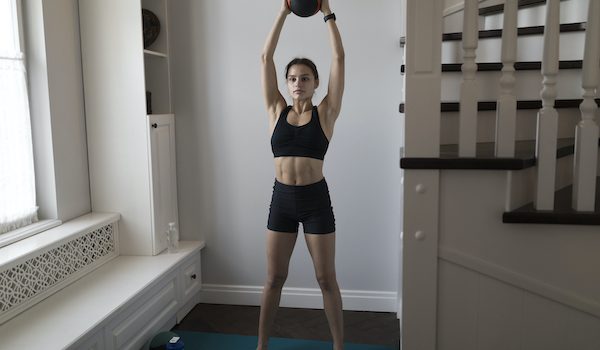
8 Volleyball Drills You Can Do at Home: No Court Needed
NewsStaffPicksVOLLEYBALL — Served by NCVA August 22, 2024 Lauren Keating 0

Volleyball players don’t stop working on improving their skills—even though the summer season is coming to an end. In fact, it’s the perfect time to prepare for the end of the summer tournaments and games while staying sharp and looking ahead to the upcoming fall season. Athletes know that the sport demands a combination of technical skills, quick reflexes, and physical conditioning. And even though access to a full court is ideal for practice, it’s not always possible. Fortunately, there are several drills you can do at home to keep your skills sharp and enhance your performance.
These drills focus on essential aspects of volleyball such as passing, setting, footwork, strength, and conditioning—which are all important to develop a well-rounded player.
Here are the 8 volleyball drills that you can do at home.
Passing and Setting Drills Using a Wall
1. Wall Passing Drill
This volleyball training drill is great for fundamental skill development. Players know that accurate passing is a crucial skill to have. The accuracy and consistency of your passes directly influence the effectiveness of your team’s offense. Practicing passing against a wall helps reinforce proper technique, which includes keeping your arms straight, using your legs for power, and maintaining a stable platform.
It also is a great drill for developing muscle memory and can be done solo at home.
How To Do The Drill:
- Stand about 6 to 8 feet away from a wall.
- Position yourself in a low, athletic stance with your knees bent and hands ready to pass.
- Toss the ball lightly against the wall and focus on using your forearms to pass the ball back to the wall.
- The goal is to keep the ball in play by maintaining control with each pass. Challenge yourself to see how many consecutive passes you can make without losing control.
- This drill helps improve your forearm passing technique, which is essential for receiving serves and controlling the ball in a game.
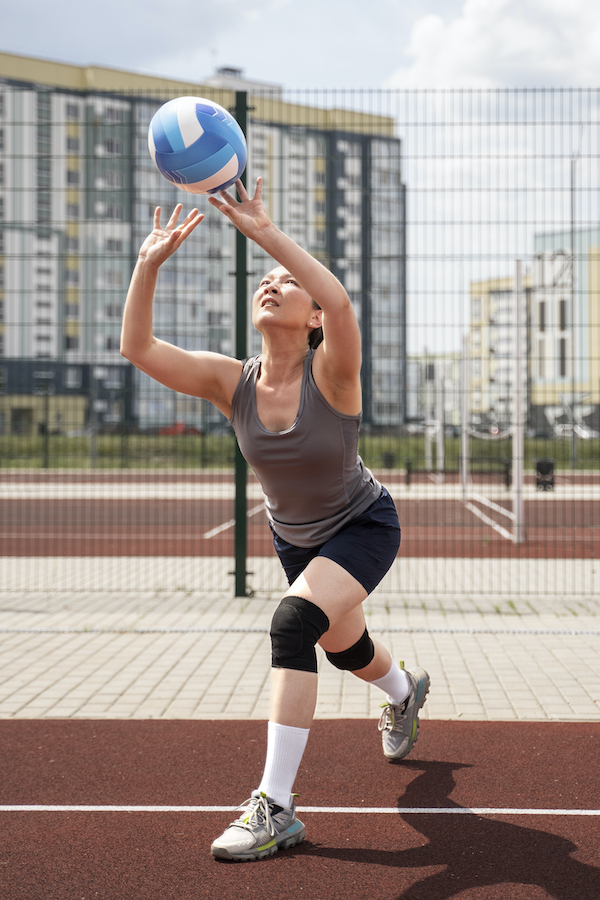
Photo: Freepik
2. Wall Setting Drill
This volleyball drill is great for working on ball control. It allows you to focus on the quality of your contact with the ball, ensuring that each set is clean and controlled. This drill helps accuracy, consistency, and focus.
How To Do The Drill:
- Stand closer to the wall, about 2 to 3 feet away.
- Toss the ball slightly above head height, and use your fingers to set the ball against the wall.
- Focus on making clean, precise contact with your fingertips, and aim to keep the ball at a consistent height with each set.
- To increase difficulty, try alternating between one-handed sets or adding a jump to simulate game-like conditions.
- This drill is excellent for developing touch and control, key elements of effective setting.
Footwork Exercises to Improve Agility
3. Ladder Drills
This at-home volleyball drill is all about working on agility and reactivity. Volleyball players must move quickly and efficiently across the court. Ladder drills improve your foot speed, agility, and coordination, all of which are essential for reacting to plays, transitioning between defense and offense, and covering the court effectively. It also helps to build endurance.
How To Do The Drill:
- If you don’t have an agility ladder, you can use tape to create a ladder pattern on the floor.
- Practice various footwork patterns, such as the in-and-out, high knees, and lateral shuffles.
- Focus on quick, precise movements. This drill enhances your agility, coordination, and speed, all of which are critical for moving efficiently on the court.
4. Shuttle Runs
A great exercise for speed and endurance, shuttle runs mimic the short bursts of speed required in volleyball, such as running to the net for a block or moving laterally to dig a ball. They help build both speed and stamina, ensuring you can keep up with the fast pace of the game.
How To Do The Drill:
- Mark two spots about 10 feet apart using cones, books, or any other objects.
- Sprint from one marker to the other, touching the ground at each marker before changing direction.
- Repeat this for 30 seconds to a minute, rest, and then repeat for several sets.
- Shuttle runs simulate the quick directional changes you need to make during a volleyball game, improving your overall speed and endurance.
5. Box Jumps
This volleyball drill is just for working the fast-twitch muscle fibers and build power. Jumping is a critical component of volleyball, whether you’re spiking, blocking, or serving. Box jumps build explosive leg power, enabling you to jump higher and react quicker at the net. A higher vertical jump can give you a significant advantage in volleyball, allowing you to hit or block the ball more effectively.
How To Do The Drill:
- Find a sturdy box or platform that’s about 12 to 24 inches high.
- Stand in front of the box, drop into a quarter squat, and explosively jump onto the box.
- Step down carefully and repeat. This drill builds explosive power in your legs, which is essential for quick jumps during spikes, blocks, and serves.
Strength and Conditioning Workouts
6. Bodyweight Squats
Strength training is important for volleyball players. It helps build strong muscles able to perform well and for the duration of practice and matches. Strong legs are essential for every aspect of volleyball, from jumping to quick lateral movements. Squats target your quads, hamstrings, and glutes, which are the primary muscles used in jumping and sprinting on the court.
How To Do The Exercise:
- Stand with your feet shoulder-width apart, and lower your body as if you’re sitting back into a chair.
- Keep your chest up, and push through your heels to return to the starting position.
- Perform 3 sets of 15-20 repetitions. Squats strengthen your quads, hamstrings, and glutes, which are vital muscles for jumping and stability.
Push-Ups
Volleyball requires a strong upper body for powerful serves, spikes, and blocks. Push-ups build strength in your chest, shoulders, and triceps, which are key muscles for these actions.
How To Do The Exercise:
- Start in a plank position with your hands slightly wider than shoulder-width apart.
- Lower your body until your chest nearly touches the ground, then push back up.
- Aim for 3 sets of 10-15 repetitions. Push-ups build upper body and core strength, important for serving and spiking.
8. Planks
A strong core is essential for almost every movement in volleyball, from jumping to diving. Planks target your entire core, helping to improve your balance, stability, and power during the game.
How To Do The Exercise:
- Hold a plank position with your elbows directly under your shoulders and your body in a straight line from head to heels.
- Start by holding for 30 seconds, gradually increasing the time as you build strength.
- Planks are excellent for building core stability, which helps with balance and control during games.
Conclusion
By incorporating these wall drills, footwork exercises, and strength and conditioning workouts into your routine, you can enhance your volleyball skills, even without a court. Each drill targets a specific aspect of your game, helping you become a more well-rounded and effective player.






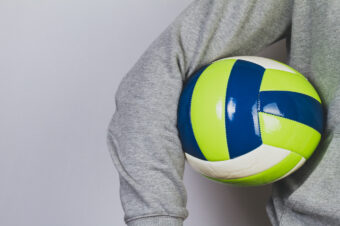

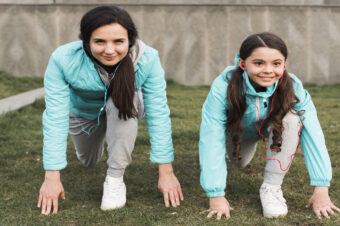
No comments so far.
Be first to leave comment below.